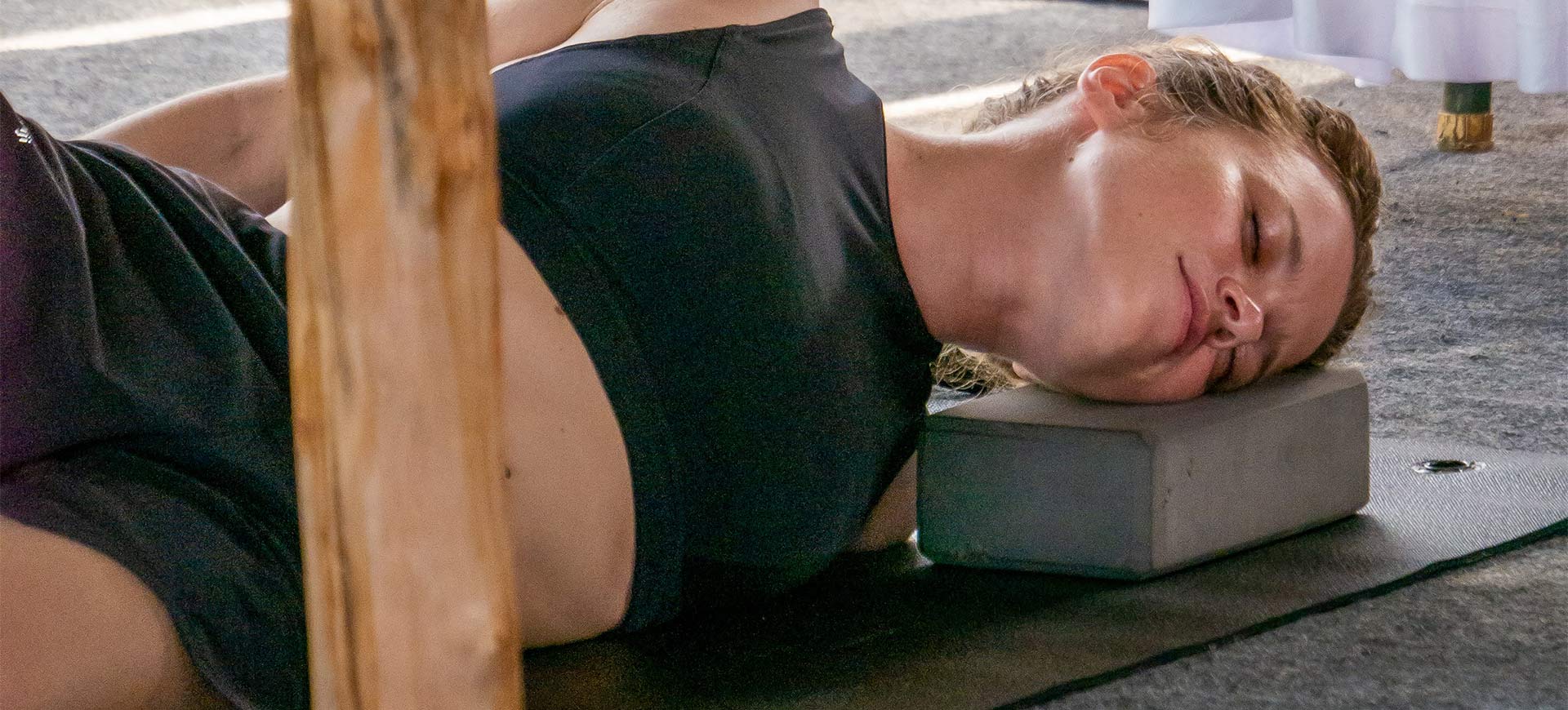
What Happens if I Lose My Place? The Best Strategies to Use if you get Stuck while Teaching Yoga
Whether you have been teaching yoga for years or are just starting out, blanking out or forgetting your place while teaching happens to the best of us. To say that this is not a fun experience is the understatement of the year.
You may be completely comfortable with public speaking or being the center of attention in a room and still have a brain blank every once in a while. You may also be new to teaching and totally frightened out of your Fabletics. In any case, having some strategies to handle this moment when it happens can ease your mind in the moment and help you feel prepared to get things back on track.
Seven Tips to Tuck in Your Back Pocket
The more you teach and the more you grow your confidence in your abilities as an instructor, the more practical experience you will have with messing up and recovering. The most important thing to note is that making mistakes will happen, nobody is perfect, and it is absolutely possible to recover from even the most embarrassing mishaps!
Here are 7 easy ideas for you to rely on next time you lose your place or make a mistake while teaching.
Don’t Panic
I realize how this sounds - to recommend in a moment of panic to just… not panic, but this statement could not be more true. Remember to stay soft and calm in your voice, let silence fill the space and be okay with a gap in the flow. You are the most aware of your own mistakes because you have a plan. Rest assured, students do not know the plan and if you are calm, they will be too and likely never notice that anything out of the ordinary happened at all.
No matter what skill you are trying to improve, mistakes are part of the road to mastery.
Lean on Routine
When you get stuck or lose your place while teaching a yoga class, a great strategy to fill the space and move your brain into a functioning gear again is to go with what you know. Lead a “Sun A” sequence or something that you know by heart. This is similar to the phenomenon of not having heard a song in years, but still being able to sing along to the lyrics even when you are distracted or stressed. You know the words by heart! So, let your memorized scripts do the heavy lifting while you regroup.
Take the Eyes Off of You
If students are in a pose where they are all facing you and this is making it even harder for you to think, cue a pose that takes the eyes and the pressure off of you. Ragdoll, Downward Dog, Wide-Legged Forward Fold, or even Child’s Pose are all great options to get students to face the back of the room or down at their mats. When all eyes are off you, you can take a second to breathe and sneak a peek at your notes. Once you feel collected and ready to go, resume your routine as if nothing happened!
Name the Elephant in the Room
If it has become obvious to your students that something is amiss or you feel the need to say it like it is, don’t be afraid to name the elephant in the room. People appreciate honesty and this often deflates any tension immediately. You are a person and people make mistakes. It is healthy to model for your class how to be imperfect and human and that mistakes are normal and nothing to be afraid of! A simple, “Oops I seem to have lost my place. Let’s take it to Downward Dog for a moment and take five deep breaths,” is all you need to take the pressure right off and keep it moving.
Mistakes make Great Messages
If you make a mistake while teaching, whether you forget your place or cue a pose on the right side but forget the left, you might decide to wrap this experience up into your messaging for your students at the close of class. Offering them time to notice how the intention they set may not have been reality, and how perfectly okay that is. Something simple and genuine like, “When we make mistakes in life or miss the goal we set ourselves, it’s okay to take a moment to honor your imperfect and beautiful and brave self,” or “We may not always achieve the perfect form of an asana, but as long as we are spending mindful time with our body and breath, we are doing yoga,” can be such beautiful sentiments to impart.

Design your Reality
When we take the classes of those who have been teaching for ten years or who have incredible flexibility or form, we inadvertently structure a reality that may incorrectly communicate to us that mistakes never happen and every yoga teacher is perfect at all times. Why do we think that? Because we see it! That’s why it is so important to surround yourself with reminders of what a yoga teacher, and an impactful class, can look like even when (and sometimes because) it is imperfect. Take classes taught by new teachers or teachers still in training. See how they move through their mistakes or clunky phrasing and let it inspire you and validate your own instruction. Fill your social media feed with just as many novice teachers and hobby practitioners as you do elite yogis who have been practicing full time for years. Trust me, you’ll notice a difference in your mindset and expectations for yourself, and yoga itself, right away.
Dig Deeper
If you find yourself miscuing, forgetting, or blanking out while instructing often, it may be time to dig deeper to discover exactly why this may be happening. If we forge ahead without trying to learn from our experiences, we can’t expect to effectively grow from them. Do you find that you lack confidence? Are you giving yourself enough time to prepare for the classes you teach? Dig in. What you find may enlighten you.
Mistakes Mean You are Learning
I do not know a single yoga teacher who would say that making mistakes while leading a class is fun. But, I do know that making mistakes means you are trying, and that trial and error is the only way to get better. Sure, making mistakes while teaching a yoga class can be stressful and even embarrassing sometimes, but planning for how you might recover is the best way to ease your anxiety and help you get through it.
No matter what skill you are trying to improve, mistakes are part of the road to mastery. So take a deep breath and appreciate exactly where you are on your journey, while enjoying your growing expertise and confidence. One day you will look back with gratitude for your younger self who made the brave choice to show up with humility and the eagerness to get better, one class at a time.






